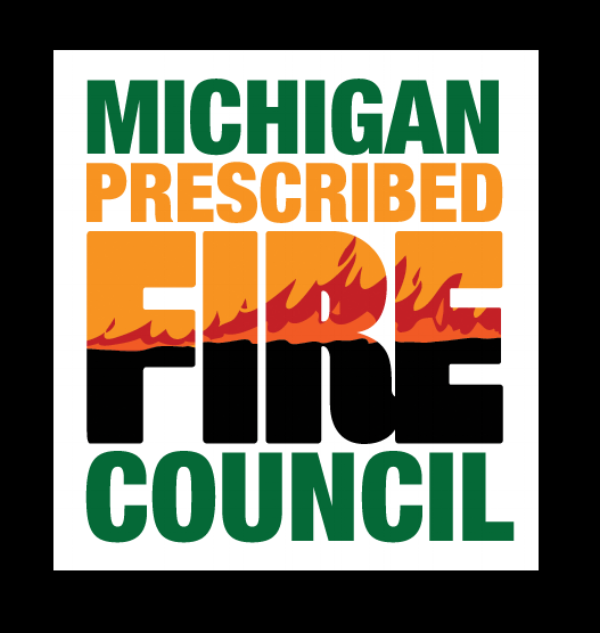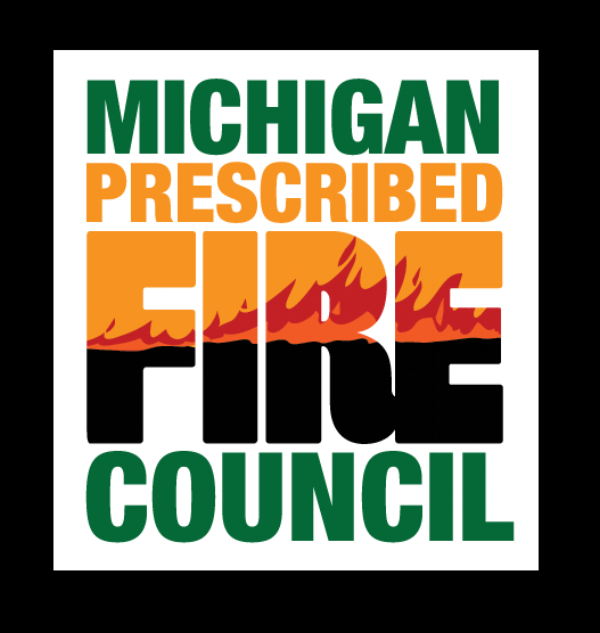A wonderful article by the Oakland Township parks department, about a recent burn that took place at Bear Creek Nature Park. Some nice photos and a thorough explanation of their burn process. Check it out!
Why I Burn: Enhancing Habitat for Rare and Endangered Species
Burn Season Passed Too Fast
And just like that, burn season has ended. Aside from the potential for sporadic fall burns, we've stopped putting fire on the ground for 2018, after covering a couple thousand acres of prescription. Seems like just yesterday I was stumbling through S-130, confused about what a firewhirl was, concerned about what PPE might feel like, and shaking out of my boots with excitement to get on the fire line. I guess that's how it always is: you get so caught up in arriving at the destination that you forget what the journey was like.
Now that it's come and gone, I'm left with a feeling that's at once empty and full. I'm hungry to learn more, to become better at laying down fire, and to move up through the ranks. At the same time, I lament over the little moments of embarrassment, the real learning moments. The time I left the vehicle without my helmet on, those few times I found myself zoned out staring at the flames, instead of paying attention to the task at hand... Being surrounded by such dedicated and impressive mentors means the bar is forever being set higher. Even once I've perfected my skills on the fire line, there's an unlimited amount to learn regarding the organization and implementation of burns, and even more to learn about researching their effects.
I guess this is all to say that, as quickly as burn season passed me by, it's heartening to know that this journey's only just begun. Whether I just continue to do prescribed burns or somehow find myself with a burning (ha) desire to become a wildland firefighter, I know I've sunk my teeth into something truly gratifying. Something as important as it is hardcore.
Burning.
Paul Mayer
MPFC Administrator
Prescribed Burn at KNC's Harris Prairie (with drone footage!)
In mid-April, a prescribed burn was performed by the Kalamazoo Nature Center and volunteers. Efforts were made to restore the traditional grassland ecosystem by managing invasive species and supporting native species. Fire is a tool used for natural area management at the Kal Haven Trailhead to maintain grassland and forest health. The burn site was a prairie of grasses and herbs with a woodland border to three sides and 10th St as the last border. The area fuel included dense dry grasses and trees in several patches. The purpose of the burn was to maintain the prairie and reduce area fuel.
The fire crew started their briefing in the late morning, splitting into different squads to maintain the borders of the 17-acre burn site. The fire maintained a steady pace with the help of the ignition crews. Several trucks with water pumps along with crews who were at the ready with rakes were prepared to put out fires that jumped the borders onto other sites. Power lines acted as a unique hazard and were given special care at this site. After the initial burn, the site was monitored for smoldering logs and downed trees for the rest of the evening.
Sarah Mensinger
KNC Intern
S130/190 Training at FCTC
Late February in Michigan drew a diverse crowd to Fort Custer Training Center, as a collection of 25+ students gathered to get their Firefighter Type 2 certification. Two days of classroom instruction supplemented with outdoor activities made for a robust and dynamic learning environment.
While a good amount of time was spent indoors, learning new and reviewing old material, the meat of the course occurred during the on-the-ground demonstrations. Instructors divided the class into different groups, each tasked with learning about a different aspect of firefighting.
Though there was a lot of new information to juggle, the organizers of the course did an excellent job of ensuring students were always saturated with new information and experiences, but never overwhelmed. Day 1 involved much more preliminary hands-on work (learning how to lay and work a hose, use and handling of tools), which made the more active work of day 2 much more navigable. After learning more of the practical information, students were immediately exposed to situations where they had to apply that information on the fly. From emergency communications scenarios, to constructing a full scratch line, to practicing deploying fire shelters, just about every possible facet of firefighting was covered. The instructors were extremely open to questions and overall the activities went off without a hitch, all while equipping the students with invaluable practical skills to be used when on the fire line.
The fact that there were no boring of confusing moments speaks to the quality and dedication of the instructors at this S130/S190 training. Having participated in the course myself, I can say that doing this training gave me skills and confidence I simply couldn't have gotten from the online classes. I only hope that this course continues to provide students in the area with the opportunity to acquire their Firefighter Type 2 Certification with the greatest degree of confidence in their own abilities.
Paul Mayer
MPFC Administrator
Burning Issues 2018 / MPFC Annual Meeting
We have such a rich history in the Michigan Prescribed Fire Council. The organization is coming up on its 20th anniversary next year. Being one of the first Fire Council’s in the country, we have helped many a state stand up their organization by sharing by-laws, experiences and techniques. Our work threads through many a path of land managers, fire professionals, and ecological scientists.
For a long time we had an annual meeting each year independent of anything else. We also tried partnering with other organization’s meetings in order to streamline the process, which unfortunately usually cost us more than it helped us.
In recent years we’ve been functioning without the help of our paid coordinator that we relied on even more than we already acknowledged her for. A few folks have stepped up to fill that void, folks with already full plates at full time jobs. To some degree it has curtailed some of the activity that MPFC used to be able to pull off. Between the lack of that coordinator and shifting duties within agencies, we’re a quieter organization these days.
With the help of the two Joint Fire Science Program Consortia we work with we have been able to pull off Burning Issues. The last two years we have merged that workshop with our annual meeting in order to streamline efforts and limit some of the more intensive efforts required of the MPFC steering committee.
This year’s workshop was very well attended, and stocked with speakers, topics and activities that were very beneficial and applicable to the fire issues we have in Michigan. We appreciated especially the help that Craig Maier of the Tallgrass Prairie and Oak Savanna Consortium provided in setting up our World Café activity. Lee Osterland and Dan Zay were also generous contributors to the set-up and execution of this exercise. From that work that the groups did the Consortia will be able to take back to their researchers the questions that land managers and fire professionals have about prescribed fire and maybe even come back with some answers for us. Regardless of further output, it was clear that the conversations that occurred helped further understanding between different facets of the natural resources community – an inherent goal of Burning Issues.
We appreciate the role of Burning Issues in our outreach efforts. By expanding our audience with the broader topics that BI brings to the table, we are able to work together to solve the issues that confront us as we re-introduce more prescribed fire into our landscapes.
We are always looking for more help in both the general work of our fire council (outreach, training, education, and legislative tracking), as well as planning our annual event. If you have been inspired or intrigued by what we’ve put forth so far, we highly encourage you to reach out to us via our info@firecouncil.org address and we’ll get your motivation directed to the appropriate people within the organization. We look forward to many more years of fire work with the community.
Crew Boss Academy
After a successful Crew Boss Academy over a decade ago, the MPFC and Ft. Custer Training Center decided to give it a go again and host this robust and engaging training at the southwest Michigan military installations. Cadre (instructors) and students came from across the country to lead and participate in this 10 day training, held in October 2017. Run like an incident for realistic training, students check in, check out gear, are assigned to a crew and are assigned an engine. Through 12 hour days and realistic incidents (from prescribed fire to medical emergencies to missing children), the students gain leadership skills and the capacity to respond to a wide range of challenges.
The curriculum rolls up several different required trainings to reach the level of Single Resource Boss in the National Wildfire Coordinating Group specifications. Instead of sitting in a classroom and listening to someone lecture for 80 hours, this method of training breaks up the needed lessons into classroom as well as realistic incidents to engage in. The instructors are particularly good at creating a training environment that has students learn how they respond to stress-inducing situations and how it impacts their capacity to lead (and to follow, for that matter).
A unique feature of this particular implementation of the curriculum originally developed by The Nature Conservancy was that two of the participants in the first Crew Boss Academy at FCTC were now instructors at this one, having achieved high levels of leadership in their own fire careers over the last decade. They and the rest of the cadre lead these trainings for many reasons, including their belief in the powerful learning that occurs in this fully engaging format AND because the bonds and professional allies gained during these trainings last a lifetime. Indeed, there were several instructors that returned to this CBA, and will likely participate again in future ones.
The MPFC hopes to maintain the tradition of hosting these rigorous academies to benefit the wildland fire community of our state AND our nation.














